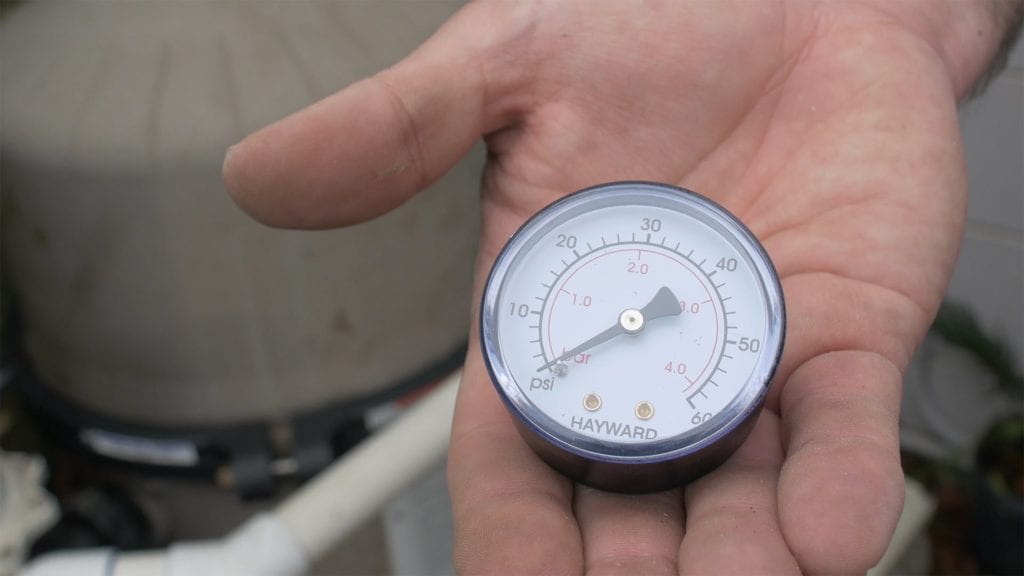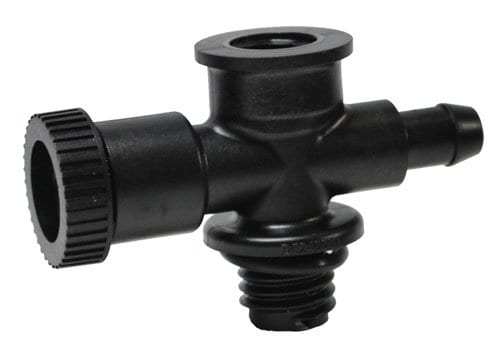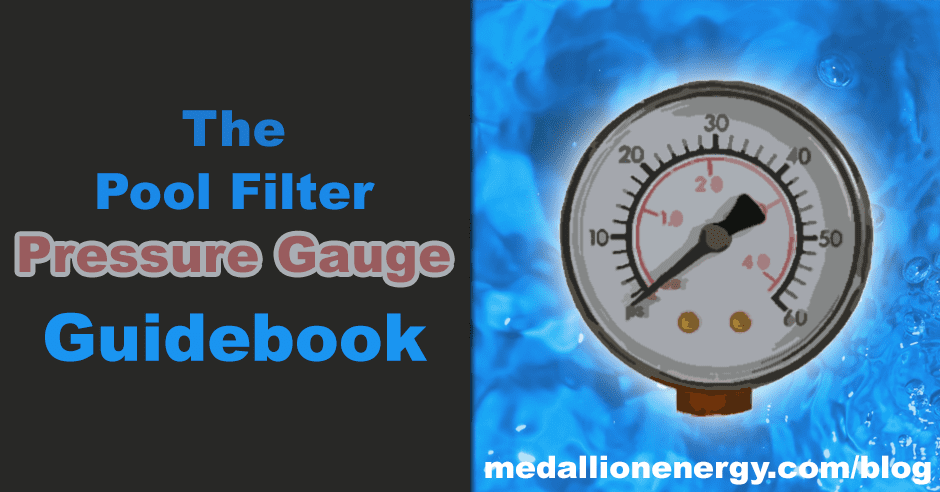Trying to learn how to use your pool filter pressure gauge? Keep reading, and you’ll be a master in no time.
Your pool filter is one of the most important parts of your pool system, but that doesn’t make it any less forgettable. It’s easy to overlook the impact pool filters have on your swimming pool, because after all, they are just big containers of water. Filtering media stuffed containers that keep your pool clean, but plastic water containers nonetheless.
As minimal as it is, your pool filter serves as your go-to source for monitoring the overall health of your pool system.
Why is that?
Well, it’s all thanks to your trusty pool filter pressure gauge. You know, that meter that sits on top of the pool filter that hardly anyone ever checks, but always fiddles with.
Your Filter System And Pressure Gauge: A Dynamic Duo
No matter what type of pool filter you have, it’s job is the same — to keep your water clean and debris-free. But the pressure gauge is what lets you know how your pool system is doing as a whole. It can alert you to when there’s a clog or leak in the system, or when it’s time to clean out the filters.
That’s what this post is all about.
[Want to learn more about pool filters? Check out this pool filter comparison guide]
How To Use A Pool Filter Pressure Gauge



Reading a pool filter pressure gauge is easy. When your pool pump is on, your pressure gauge gives you live feedback of your pool system. There are only two parts you really need to focus on:
- The measurements on the face of the gauge reading 0 – 60 PSI
- The needle that points to a number on the gauge
Turn on your pool pump and check your filter gauge. Record where the needle is pointing. Congrats, you just successfully checked the water pressure of your pool.
What’s a normal pressure reading?
Every swimming pool is different when it comes to this. Unfortunately, there isn’t one specific number that represents a normal reading. A number of factors from the size of the pool and plumbing to equipment and water level affect the PSI of your pressure gauge.
With that being said, a normal reading is actually really easy to calculate. It’s commonly referred to as a “clean reading”, and that’s because it’s the reading on your pressure gauge when everything is running how it should. When you first get your pool system working, and water flow is clean and unobstructed.
Pressure is too high
Over time, your the PSI reading on your pressure gauge will increase. The question is, how much is too much?
Typically, once the gauge reads 10psi above your normal, or clean reading, it’s time to clean the filter.
High-pressure readings mean that there’s a pressure buildup at the point of the filter system. Since the pressure is still above the normal reading, it’s clear that water is flowing through the filter regularly. But an above normal PSI reading indicates that the water is having difficulty passing through the filter media.
These resources on cleaning and replacing different types of filter media will help you when you run into this problem:
–How to Clean/Replace a Cartridge Pool Filter
–How to Clean/Replace a Sand Pool Filter
–How to Clean/Replace a DE Pool Filter
You’ll know it’s time to replace your filter media when the high-pressure readings keep coming back quickly.
Pressure is too low
A pool filter pressure gauge showing a low PSI reading indicates water flow issues outside of the filter. This is easy to determine because the water pressure is already low by the time it reaches the filter. The only parts of the pool system that water flows through before that are the skimmer basket, pump basket, the pump itself, and the main drains. Which means that low readings are usually due to some sort of blockage in one or more of those areas, causing the pump to send water to the filter system at a low pressure.
So when your pool filter pressure gauge reading is low:
- Check your skimmer basket for debris buildup or clogging
- Check your pump basket and impeller for debris buildup
- Check the main drains for blockage
- Check that your pool pump is running at full power
- Check the pool water level
[Having pump problems? This post on how to troubleshoot your pool pump]
How to use a pool filter pressure gauge air relief valve



Your pressure gauge works together with your filter’s air relief valve. In fact, most pressure gauges attach directly to the top of the air relief valve. But anyhow, let talk about what those valves do.
As the name implies, your air relief valve is a release for any air trapped within the filter system. Little bits of air easily get caught in the system for a number of reasons, whether it’s opening the pump basket or backwashing the filter. Over time, this trapped air builds up. As you power on your pump, the extra air moves into the flow of water.
Doesn’t sound like a big deal right? Well, that trapped air contributes to the overall pressure of your pool system. So if you don’t regularly vent your filter, the trapped air can increase the pressure of the system and affect water flow.
In comes your air relief valve — use it whenever you notice a bit of an increase on your PSI reading. It’s a great way to quickly troubleshoot your system for any major or minor problems related to the circulation.
When to replace pool filter pressure gauge
Eventually, even the best pool filter pressure gauges give out, but it’s not always easy to tell when that is. So here are a few tell-tale signs for when to replace your pool filter pressure gauge:
- Cracked glass shield
- Corroded or stripped threading
- Stuck or loose needle
Pool Filter Pressure Gauge Replacement
If your pressure gauge needs replacement follow these steps:
- Turn off your pool pump
- Turn air relief valve counter-clockwise to release pressure
- Using a wrench, carefully loosen the gauge turning it counter-clockwise
- Remove pressure gauge from fitting on top of filter head
- Insert new pressure gauge into fitting
- Wrap 3 layers of plumbers on the threading of the gauge
in a counter-clockwise direction - Hand-tighten the pressure gauge back on to the top
of the filter head - Use a wrench to gently tighten the gauge into place
- Turn on pool pump
- Turn off air relief valve when water begins spraying out
Your Pool Filter Pressure Gauge, and You
As you can now determine, your pressure gauge is essentially your window to your pool system. It lets you easily check for any issues affecting your pool circulation. Whether it’s an issue with the filter or a clog in the system, your pressure gauge is a valuable tool for troubleshooting your pool system.
Of course, some pool problems extend beyond reading your pressure gauge. Consider taking a load off of your pool maintenance responsibilities, and using a professional swimming pool service.


